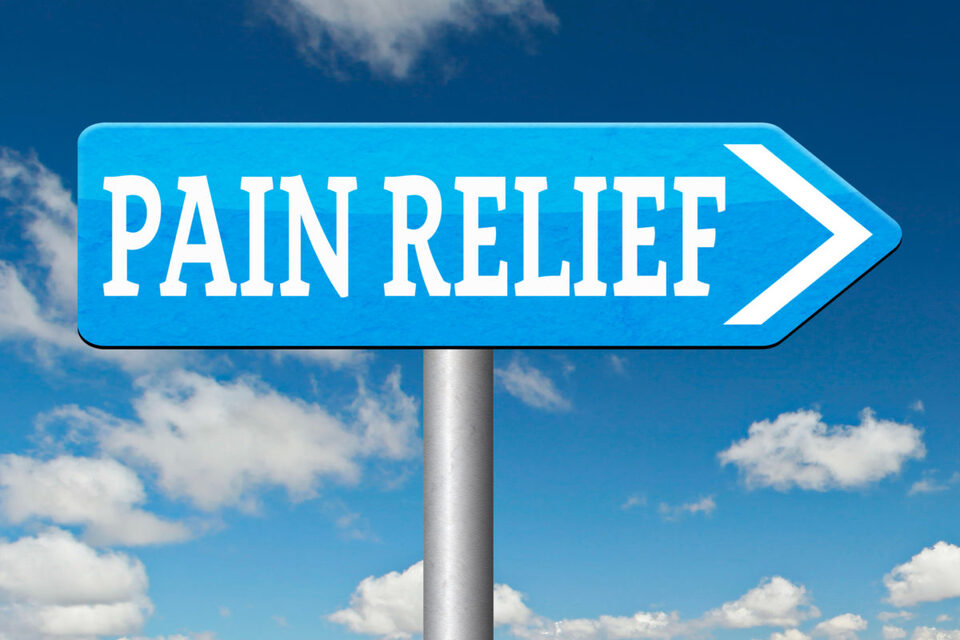
A new study just published in The Lancet, a highly respected mainstream journal, reported that patients with low back pain and neck pain who were prescribed opioids did no better than patients given a placebo. The randomized, controlled study of 347 patients found that there was no significant difference in pain scores between the two groups at six weeks. A year later, the placebo group had slightly lower pain scores,1.81 compared to 2.37 for the opioid group. The average age of participants in the study was 44.7 years and they all had lower back pain, neck pain or both for 12 weeks or less.
According to the National Institute for Drug Abuse (NIDA), 10-12% of those prescribed opioids develop an addiction. Despite the fact that over a million Americans have died of opioid overdoses to date, opioids continue to be widely prescribed as noted by the CDC. After peaking in 2012 at 81.3 prescriptions per 100 persons nationwide, the prescription opioid rate was 43.3 per 100 persons in 2020. However, some counties had rates that were nine times higher than that. This study indicates that many pain patients are being unnecessarily exposed to devastating and potentially fatal risks for absolutely no benefit.
I believe that the reason that opioids continue to be so widely prescribed despite the risks is that healthcare providers and patients have heard so often that “opioids are the best treatment we have for pain”. This statement has been repeated so often by pharmaceutical interests and their enablers despite the lack of evidence that most people believe it. Will this study be enough to change these beliefs? I doubt it.
Besides patients’ and healthcare providers’ frequently reinforced beliefs that “opioids are the best treatment we have for pain”, there are several other barriers that get in the way of change. These include:
Healthcare providers are not educated about safer and more effective alternatives.
One survey of medical school curriculum in the U.S. found that physicians were receiving less than two hours of education about pain during their four years of medical school. Post-graduate education is largely sponsored by the drug companies, who fund the medical journals through advertising, sponsor most of the continuing education courses and conferences that physicians attend and send sales reps to physicians’ offices to peddle their wares on an almost daily basis. There are no comparable platforms for educating physicians about alternatives to pharmaceuticals for the treatment of pain.
Insurance companies won’t pay for alternative treatments or severely underfund them.
They do not pay for acupuncture, biofeedback, massage, nutritional counseling or supplements, exercise programs, herbal treatments, light therapy or other proven pain treatments. They have not raised fees for chiropractors, mental health providers or physical therapists in over 40 years.
Government policy often blocks access to alternative treatments.
Marijuana is still federally illegal, making it inaccessible for many. The FDA has gone to great lengths to try to ban kratom, a very effective southeast Asian pain-relieving herb, and failing that, has done their best to demonize it. Several states have banned kratom.
The FDA has also recently declared homeopathy illegal, classifying all remedies as unapproved drugs, despite significant evidence that homeopathy is safe and effective and a long tradition of its use being legal.
No federal or state laws require insurance coverage for most alternatives or adequate fees for the treatments, like physical therapy, psychotherapy and chiropractic, that are covered.
Sign My Petition to Require Insurance Companies to Pay for Alternative Treatments
The supply of alternative service providers cannot currently meet increased demand.
For instance, while the demand for chiropractic services has been increasing, the U.S. Small Business Administration reports that the five-year survival rate of chiropractic practices is only 48.9%. This is most likely due to low fees and excessive paperwork demands by insurance companies.
The physical therapy profession is currently hemorrhaging providers despite increasing demand, with over 22.000 physical therapists leaving the workforce in the last quarter of 2021 alone. Over 15,000 licensed clinical social workers left the workforce during the same time period in professions where there were already significant shortages.
There are already shortages of massage therapists and demand for acupuncturists is already increasing compared to supply. These shortages will be even more severe if insurance coverage is made available.
The Placebo Effect and Chronic Pain
The placebo effect refers to the improvement in a patient's condition, despite receiving a treatment with no active pharmacological properties, for example: a sugar pill. Research has consistently shown that when patients genuinely believe they are receiving an effective treatment, their bodies often respond accordingly, producing measurable improvements.
The power of placebos extends beyond a mere psychological response; it can lead to actual physiological changes in the body. Studies have shown that the placebo effect can trigger the release of endorphins (the body’s natural opioids), dopamine (the body’s natural mood elevators) and other neurotransmitters associated with pain relief and improved mood. This indicates that the mind possesses an innate ability to activate the body's self-healing mechanisms.
Placebo-controlled clinical trials are now standard practice in drug development, enabling researchers to evaluate the true effectiveness of new medications, or in the case of the above-described study, older medications.
While placebos have the potential to produce positive outcomes, some have raised ethical concerns about their use. They claim that deceiving patients by prescribing placebos without their knowledge undermines the principle of informed consent. However, I would counter that by pointing out that prescribing potentially dangerous drugs without warning patients of the full range of risks or the fact that a safer alternative exists is a much higher order ethical violation.
Researchers are exploring ethical ways to use placebos. Some studies have shown that even if you tell patients they are getting a placebo for their condition, it still seems to have the desired effect.
Placebos and the Power of the Mind/Body Connection
Placebos are an indicator of the power of the mind-body connection to influence our well-being. The effectiveness of placebos in pain management has been observed for both acute and chronic pain. Placebos have shown significant analgesic effects in conditions such as migraines, osteoarthritis, and even post-surgical pain. They have been proven to reduce pain intensity, increase pain tolerance, and enhance overall well-being. Placebos have also been shown to reduce anxiety and depression and to improve sleep.
Want to try a placebo for yourself or a loved one? Here is a placebo you can order on Amazon:

Conclusion
Many safer treatments for back pain, neck pain and other types of pain exist and should be offered to patients instead of misinforming patients that “opioids are the best treatment we have for pain”. A “best” treatment doesn’t have the potential to kill people.
Cindy Perlin is a Licensed Clinical Social Worker, certified biofeedback practitioner, chronic pain survivor, the author of The Truth About Chronic Pain Treatments: The Best and Worst Strategies for Becoming Pain Free and the founder and CEO of the Alternative Pain Treatment Directory. She has been helping her clients in the Albany, NY area reach their health and wellness goals for over 30 years. She also provides virtual pain consults. See her provider profile HERE.












Comments